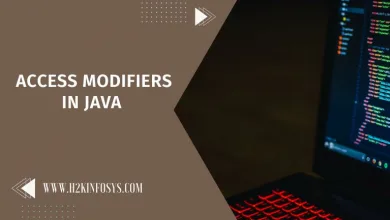How Recursion Works in Java

Algorithms are frequently used by Java developers to divide an issue into manageable bits. With this divide and conquer strategy, you can run the same method more than once to handle each component in order to address any broken problem.
Recursion is the programming technique where a method calls itself and ends when a base case is reached. A base case is a conditional statement that breaks the loop by executing a return statement rather than invoking the same function once more. Recursion is commonly used in divide-and-conquer algorithms and in the solution of series problems, including computing factorials or Fibonacci sequences.
This article will go over recursion in Java and show you how to create a recursive method that finds a number’s factorial. Check out the free Java course online to learn more.
Using Recursion in Java
When compared to an iterative method, Java’s recursion code is very straightforward. Because the variables are eliminated as soon as the function returns, recursion makes it easier to build software that utilises less memory. Because recursive functions are pure, only their input parameters determine their outputs.
Factorials and Recursion
A function that prints the factorial of a number can be examined to gain an understanding of recursion in Java.
Multiplying a number by all positive integers smaller than itself yields the factorial. This section presents a comparison of the loop-based code and the recursive code.
For instance, you can represent 120, the factorial of 5, as follows:
factorial (5) = 5 * (4 * (3 * (2 * 1)))
Observe how a series this is: Five times the factorial of four times the factorial of three times the factorial of five, and so on, is the factorial of five. For the recursion, the base case is 0. When the input parameter drops to zero, the method body would return 1.
Factorials Using a Loop
The function that follows uses a For loop to calculate the factorial of the integer handed in as an input once, and recursion to compute it twice. Use a parameter when calling this method from the primary entry point. You may verify this by giving the program the input parameter 5, which will result in a return value of 120.
Factorials can be executed in Java using both the For and While loops.
Handling Edge Cases
You can include edge cases in recursive function construction to stop the recursion. testing for short circuits in case the subsequent recursive call is a base case. You can start the recursion and return 2 when the number is equal to 2, rather than just returning 1 when the value is equal to or less than 0.
Recall that creating a wrapper function that runs a conditional check on the parameters is necessary in order to short-circuit. Because the wrapper’s value needs to be higher, this is frequently avoided.
Create a new member method in the class that serves as a wrapper for the recursive function to handle the short-circuiting. To begin the recursion, the wrapper function factorial invokes the internal function factorialRecursive. The result of this code is the same, but it skips one more step in the execution as it short-circuits when the number becomes 2.
How Recursion Works in Java
Java programs can call themselves using recursive functions, which compute the output by performing the same actions on a sequence of input parameters. Just a small portion of their practical uses are illustrated by the examples given. Recursion is used in a number of the Java Software Development Kit’s (SDK) sorting and searching algorithms, such as tree traversal, merge sort, and depth-first search.
That being said, recursion is not always the best approach, particularly in situations when memory is scarce. It is advised to write functions iteratively in these kinds of situations. As a result, solutions are less vulnerable to memory overflows and more scalable.
Recursion, on the other hand, allows programmers to seamlessly integrate the finest functional programming techniques into object-oriented programming without causing unintended consequences. This strategy is more intelligent than forceful.
Recursion Best Practices
Handle all cases that could arise during a recursive function’s return. If you ignore the edge situations, your recursion may never end, leading to an early program termination via StackOverflowException errors. Recursion requires you to build a wrapper function around the recursive function, so short-circuiting is not always the ideal solution. Use a conditional check for the edge cases inside the recursive procedure and the parameters the function can receive in place of a short-circuit wrapper function.
Additionally, keep in mind that stacks do not remember arguments that have already been handled. This may cause your recursive function to handle the same inputs more than once. You should always use memoization to save arguments after processing in order to prevent this repetition and decrease time complexity.
Conclusion Check out our Java online tutorial to learn more about Recursions.





